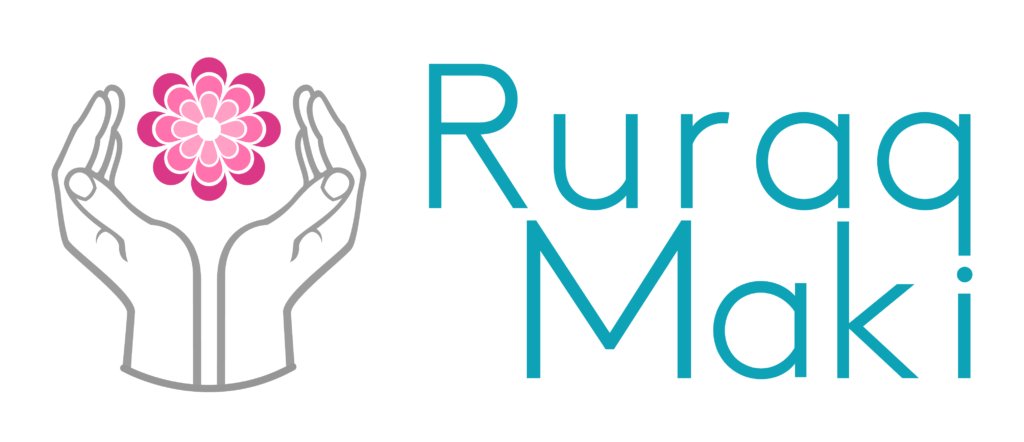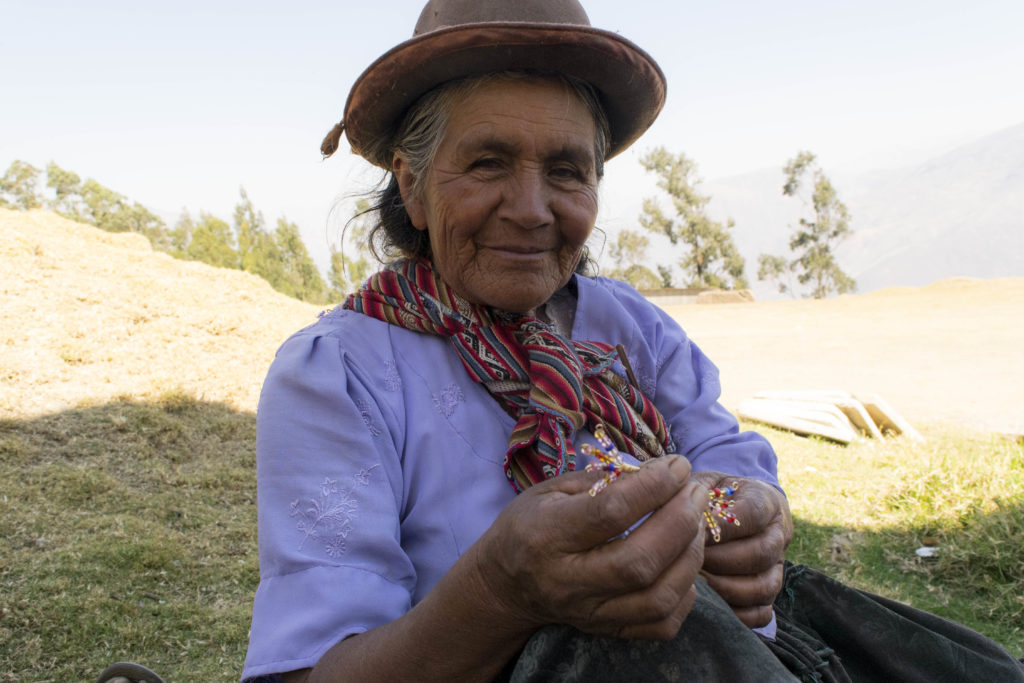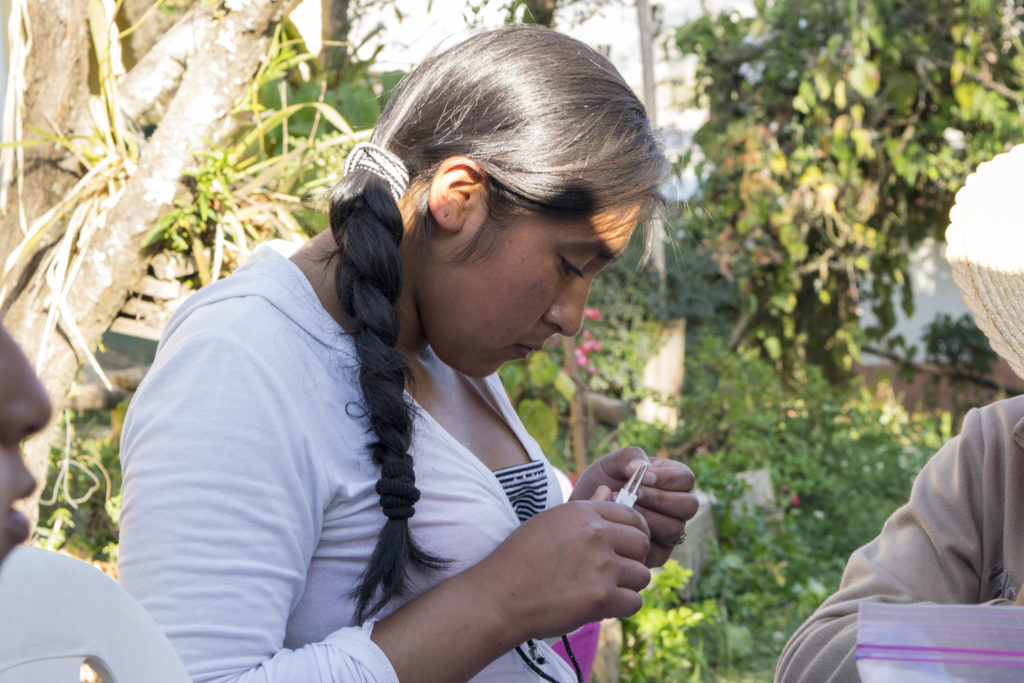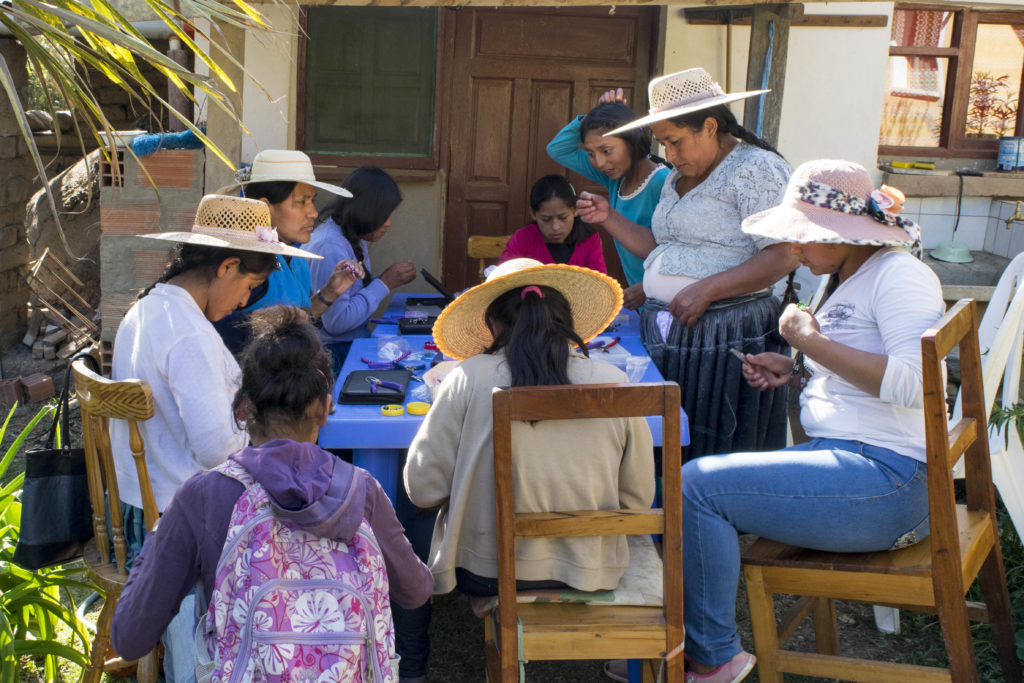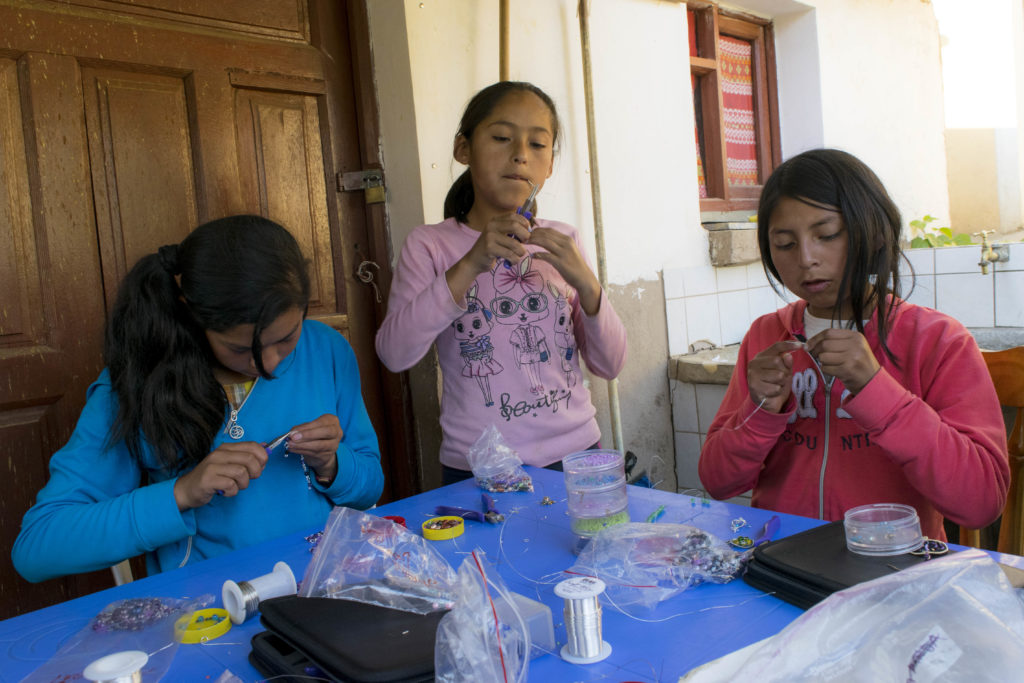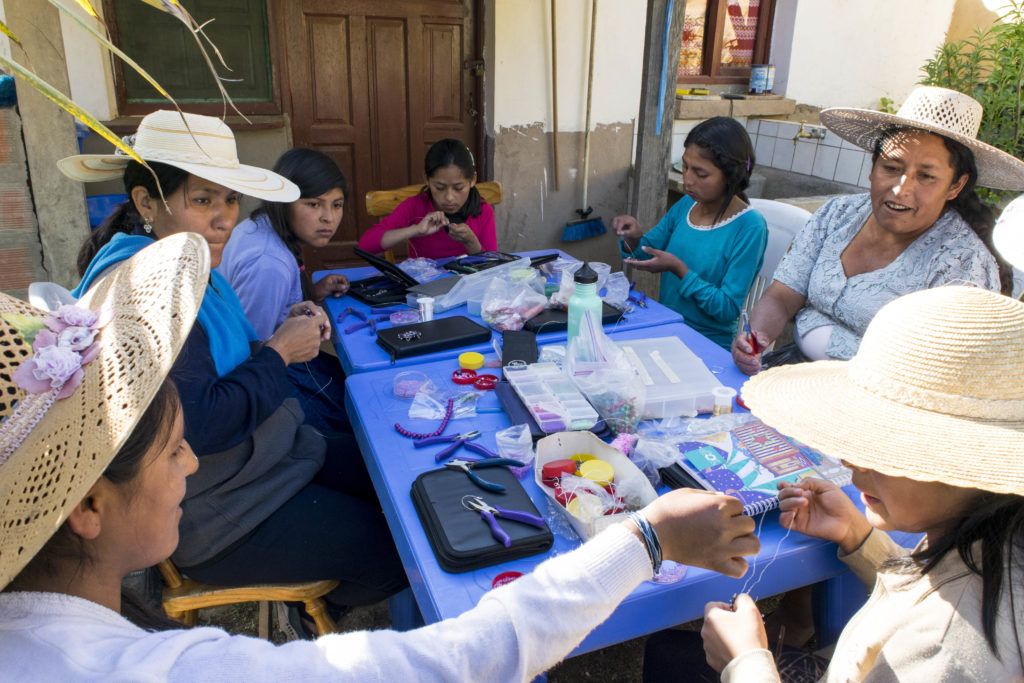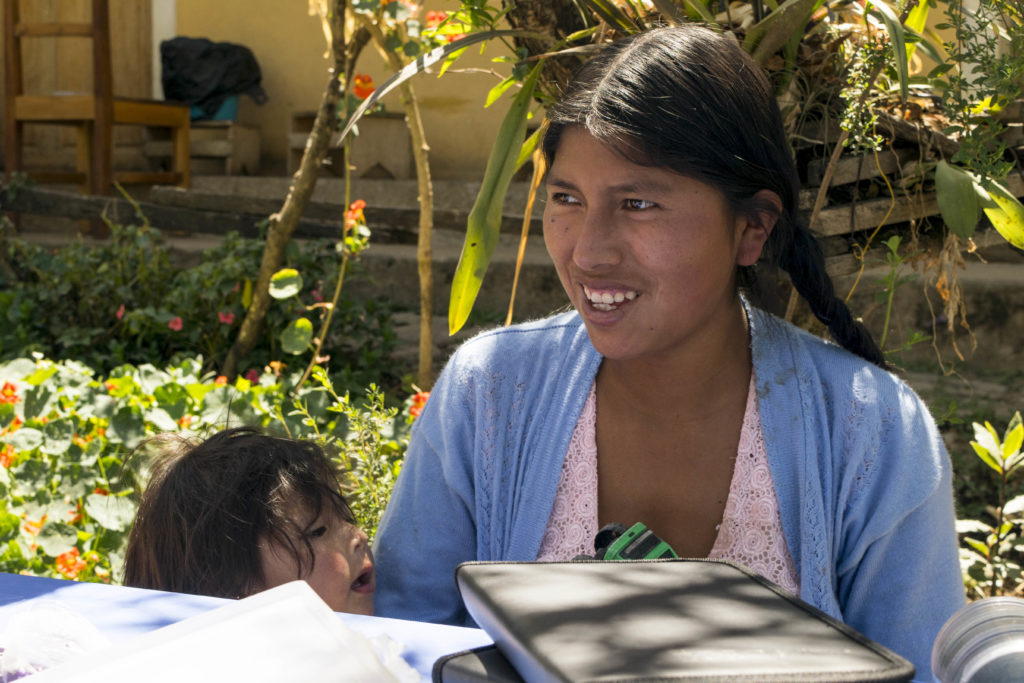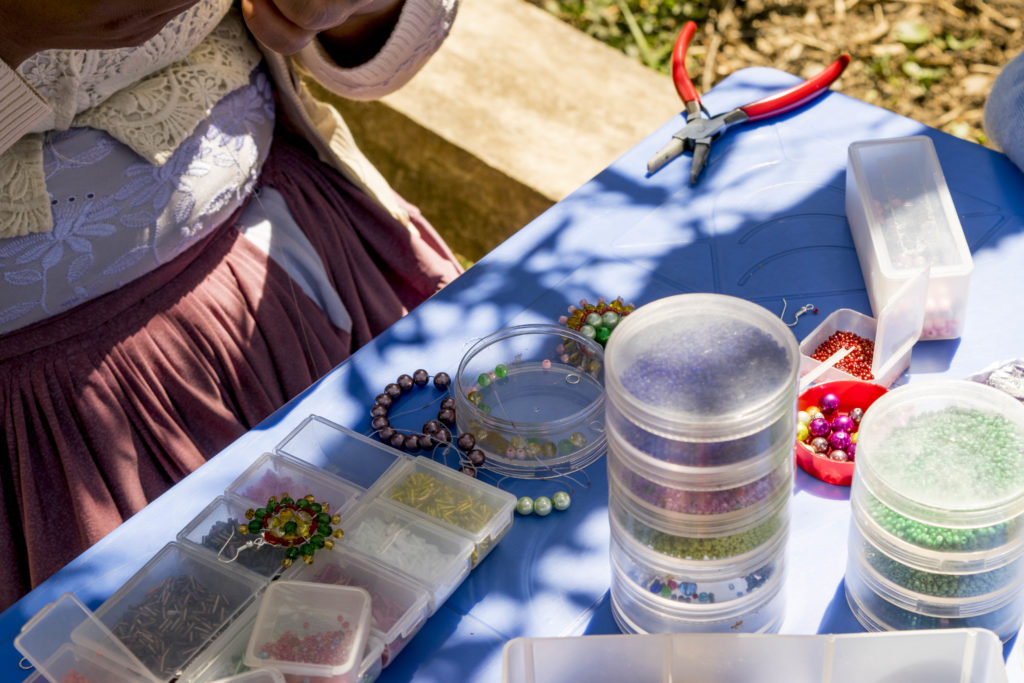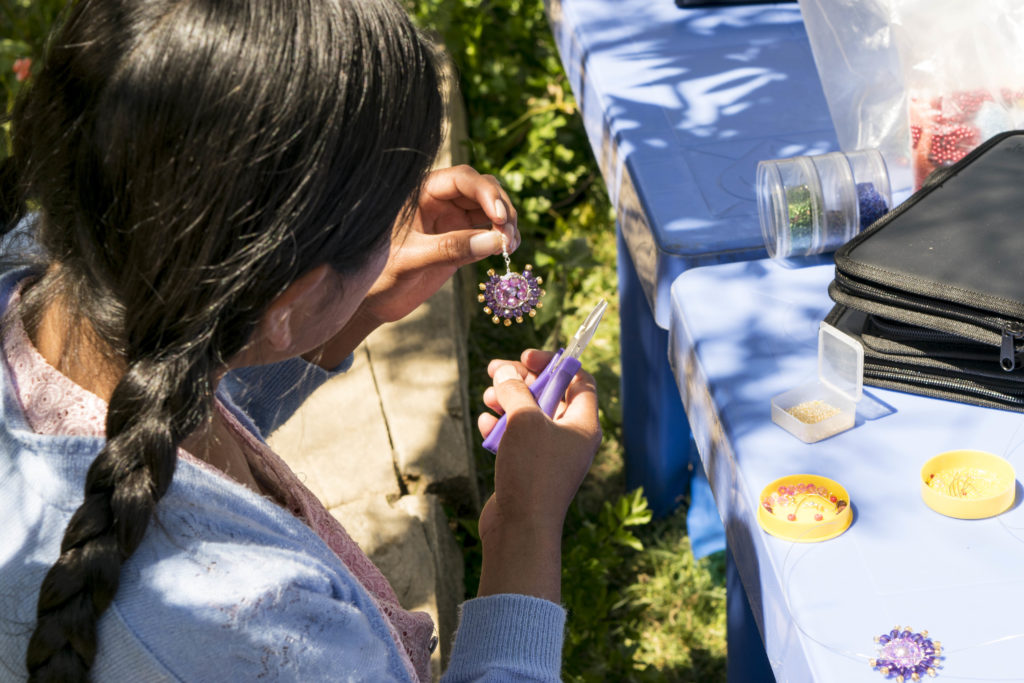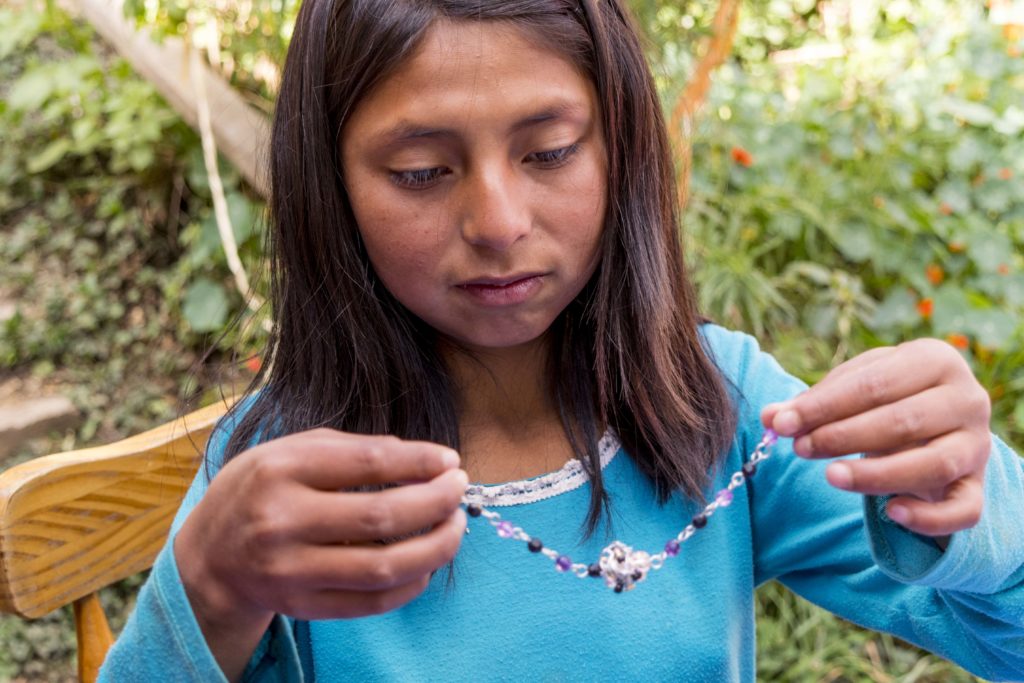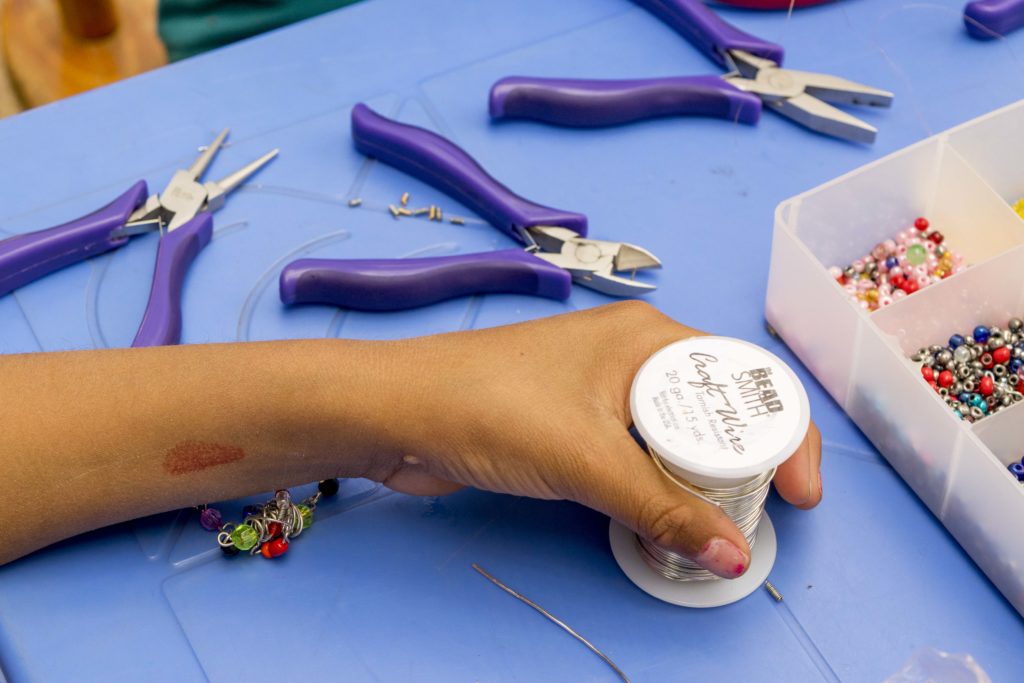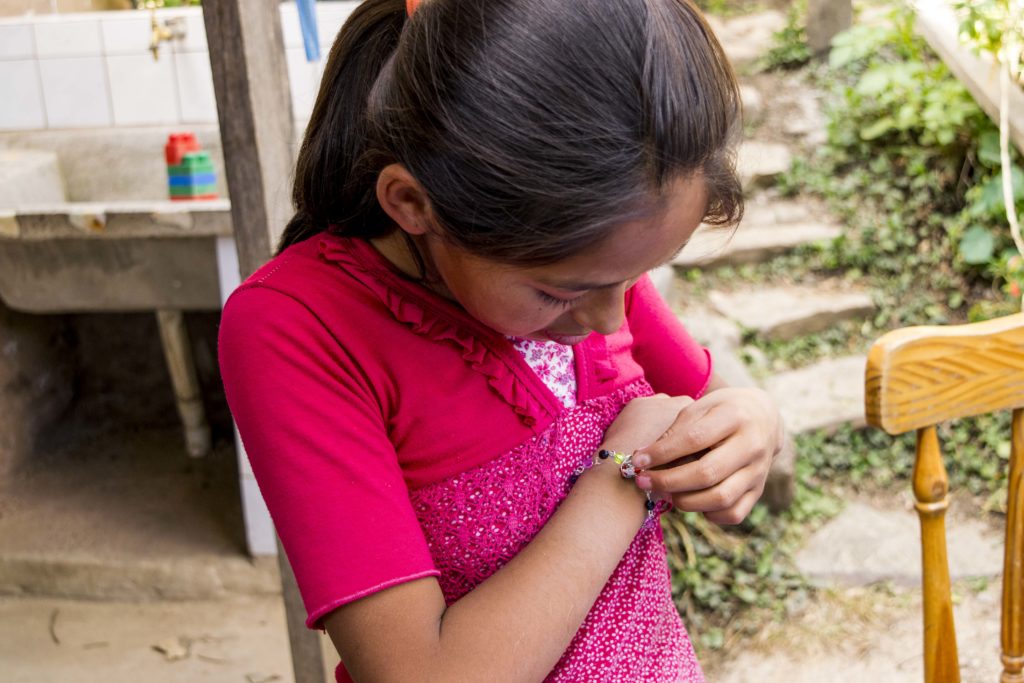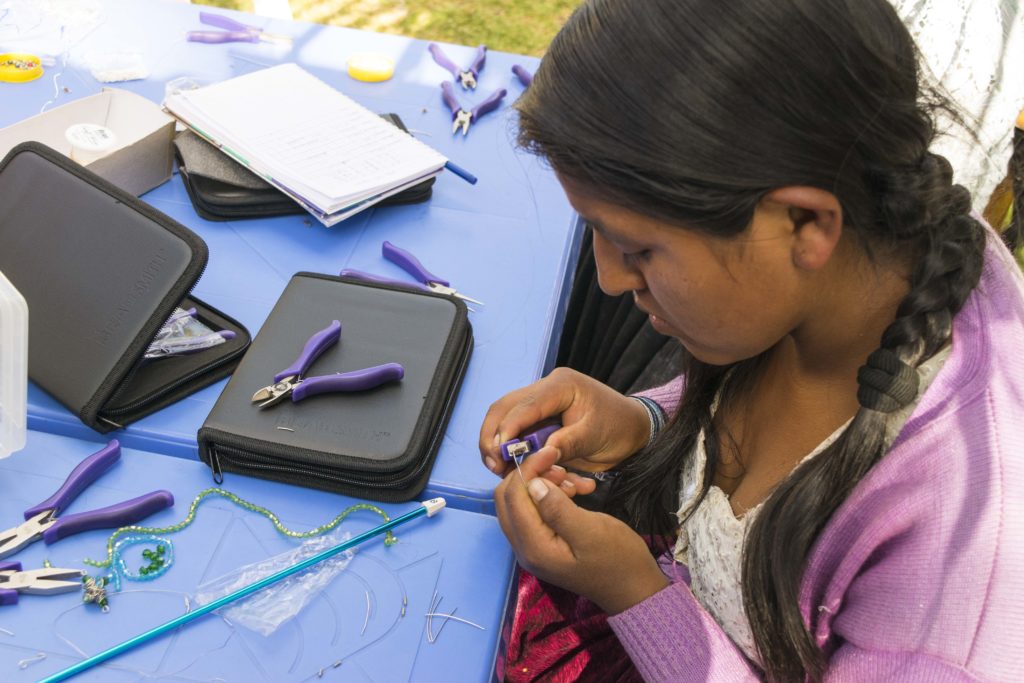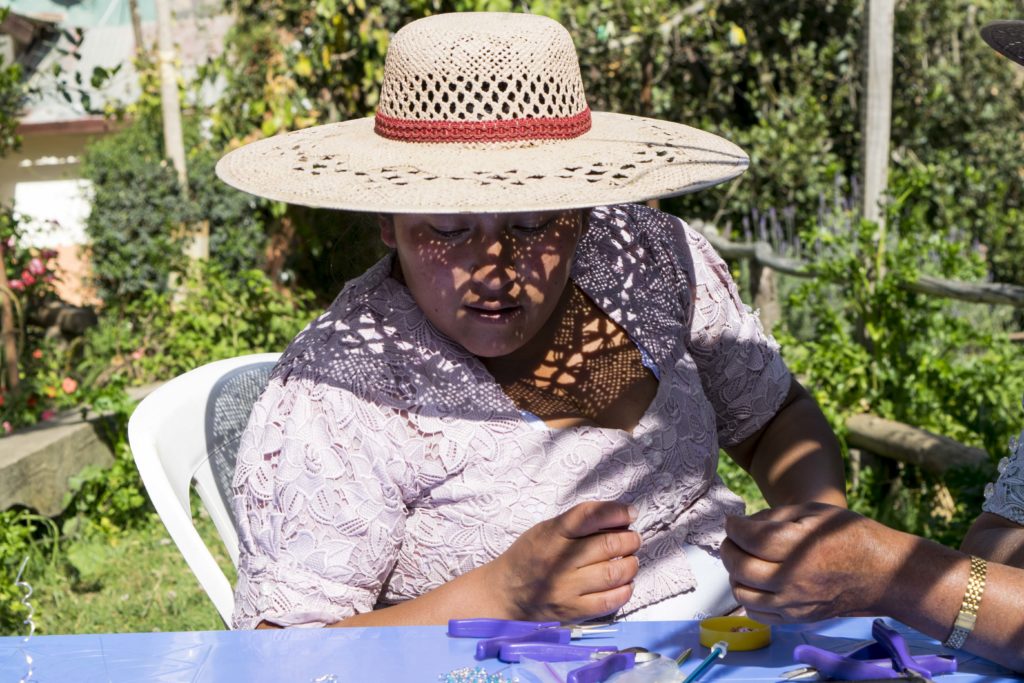We took our annual trip to the small community of Hunacarani, where most of the weavers who makes our products live. Huancarani is a rural community of men and women who live off of subsistence farming. Their day to day lives consist of pasturing their sheep, tending to their land, and weaving. Most of the women are over 50 and speak Quechua, so the class is taught through a Spanish interpreter who is also from the community.
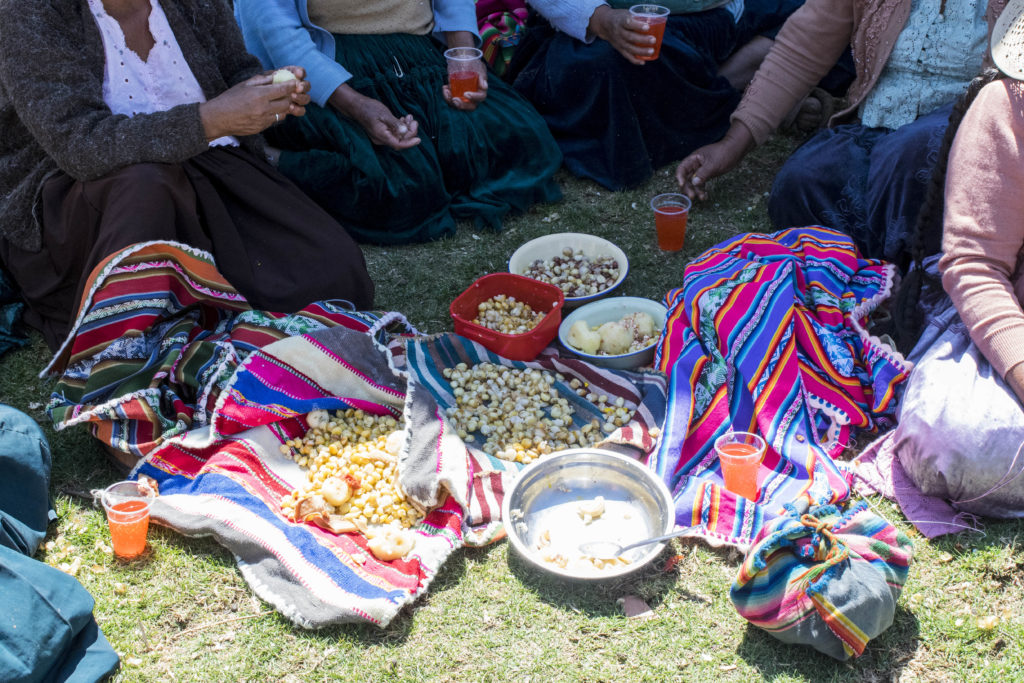
We arrived mid-morning and slowly the women began to trickle in from their morning of pasturing sheep. As more arrived they spread out the food circle. Eating is communal and everyone brings food bundled in a weaving or cloth. Campo food is corn, potatoes, egg, noodles, and cheese mixed with spicy peppers (this was new this year and SO delicious). The food is simple and everyone sits in a circle, eating with their hands.
The meals went on for quite some time since, every time someone arrived, more food was laid out and it is polite to eat from everyone’s bundle. Finally, after more than an hour of sharing the meal, we were ready to start with the class!
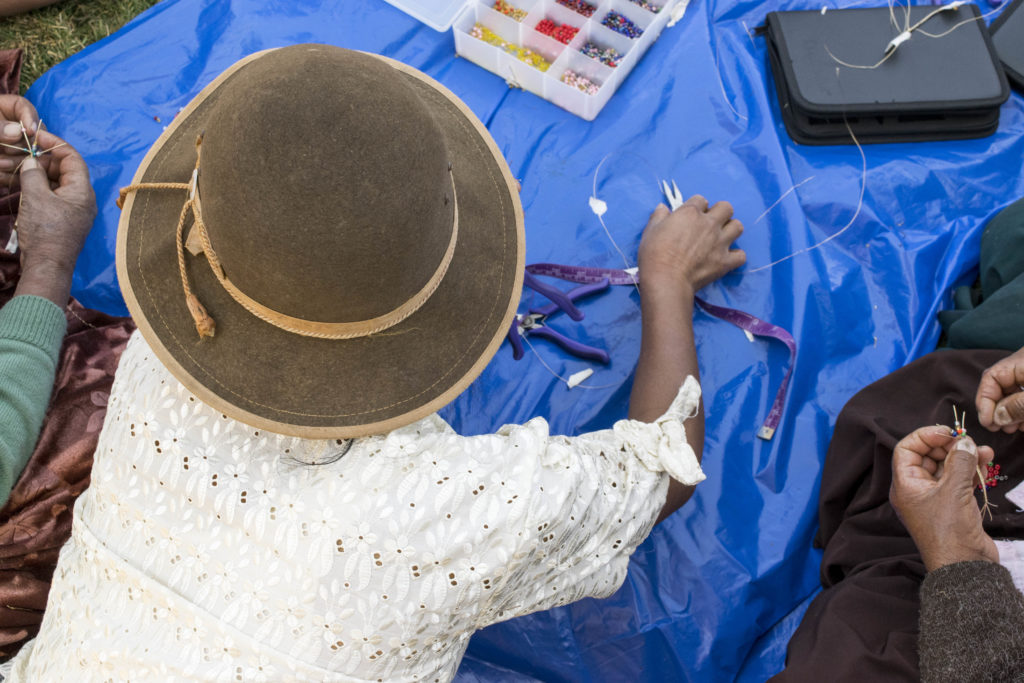
Dona Maxima, the interpreter and trainer, and I divided the group into two: those who speak even minimal Spanish and those who speak only Quechua. The project was a simple ring that only required 3 steps yet enough beads to give them the opportunity to do the best part: combining colors.
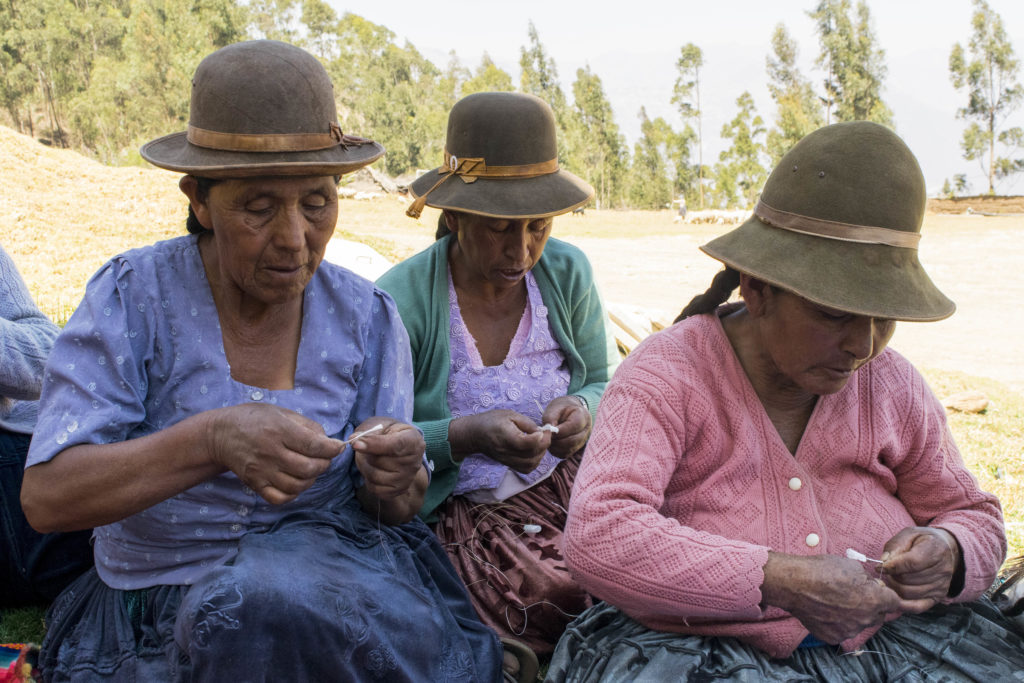
The class was a real joy this year. Not only was it huge, with nearly 15 participants, it was lively! The women chatted and giggled as they made their projects. Rarely do they have the opportunity to just talk to one and another without the distraction of work and land. The jewelry class is a woman’s circle- where there is time carved out just for them.
The finished rings were very fanciful and the women laughed as they gazed at their weathered hands, brightened up with color and beads. The running joke was that the rings were like brass knuckles and the women joked about going home to punch their husbands.
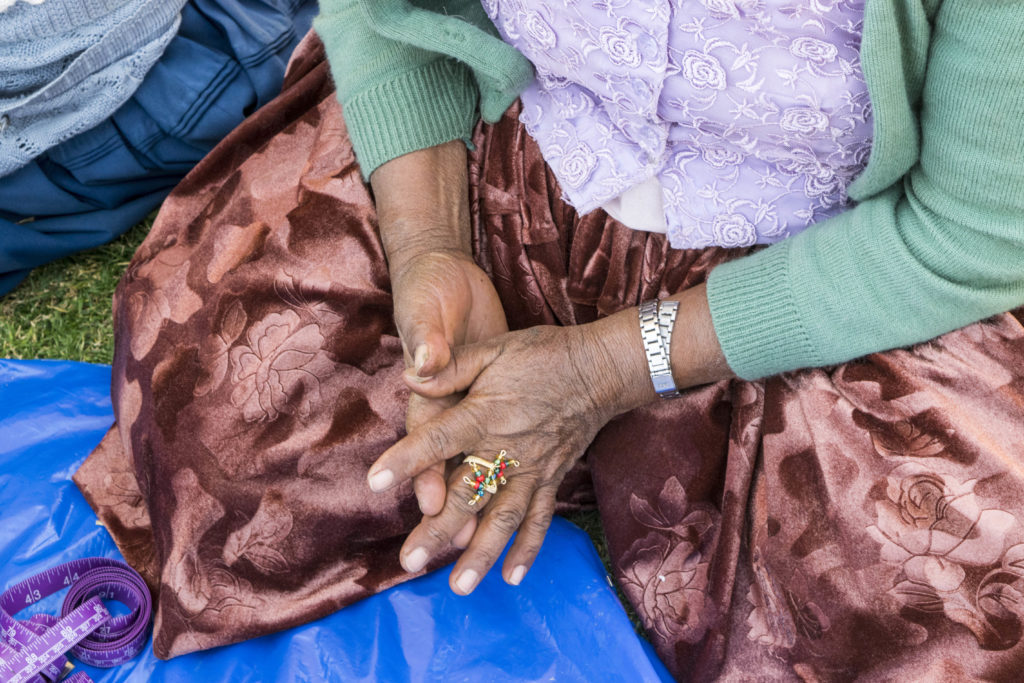
Domestic violence, with men drinking and hitting their wives, is extremely common here (so common it is considered normal) and the joke pointed to a sense of empowerment and agency that the women felt after creating something new.
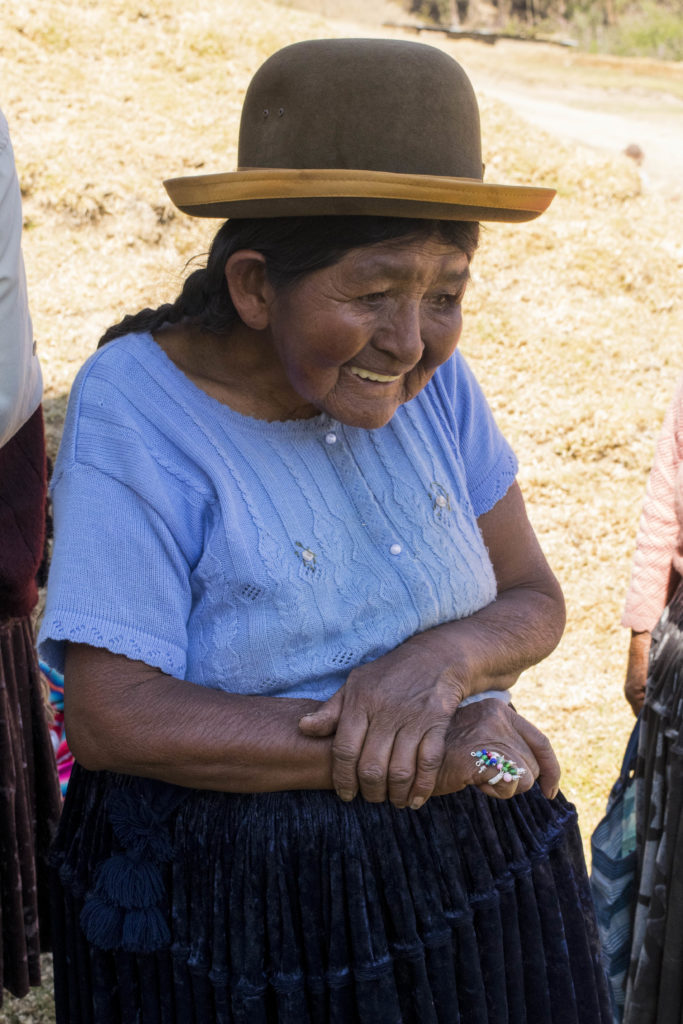
After the class (which was hard to finish because no one wanted to stop making jewelry!) the women held their annual association meeting to discuss upcoming events. Then there was more eating (food laid out by the late comers) and finally a fury of rare hugs and kisses to say goodbye (culturally, hugging and kissing isn’t normal).
Such a beautiful day in the campo with a group of women who make my heart sing!
